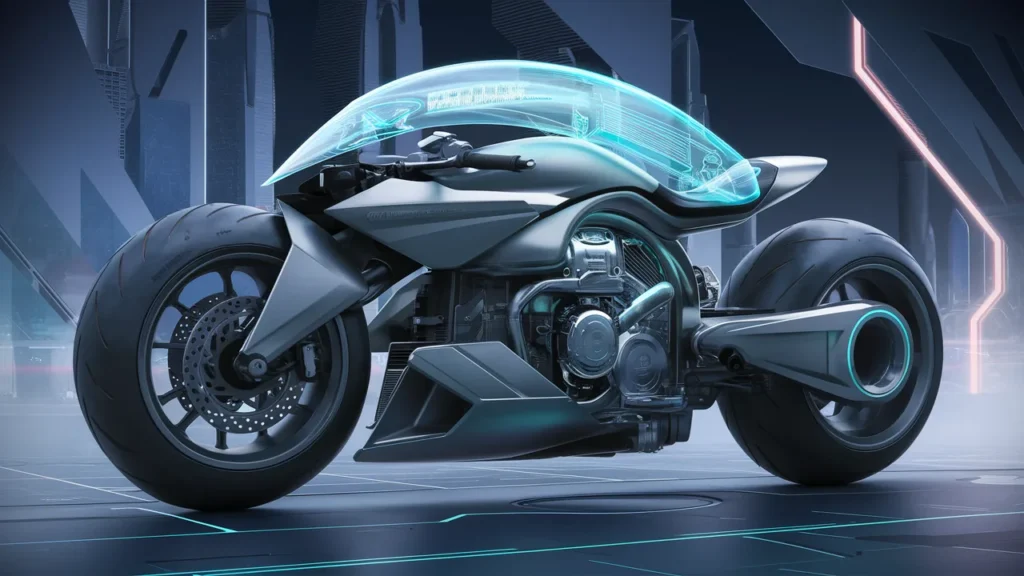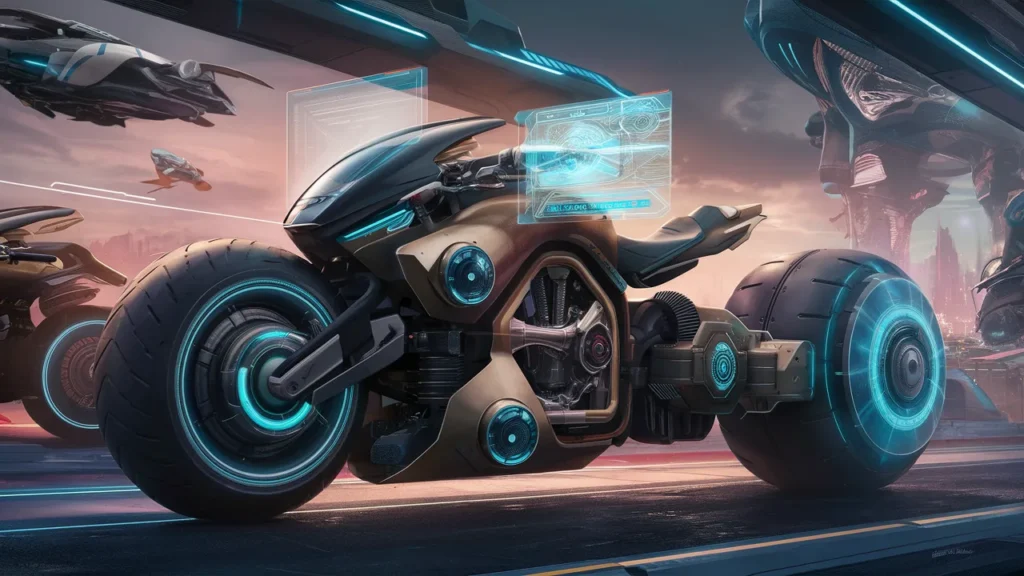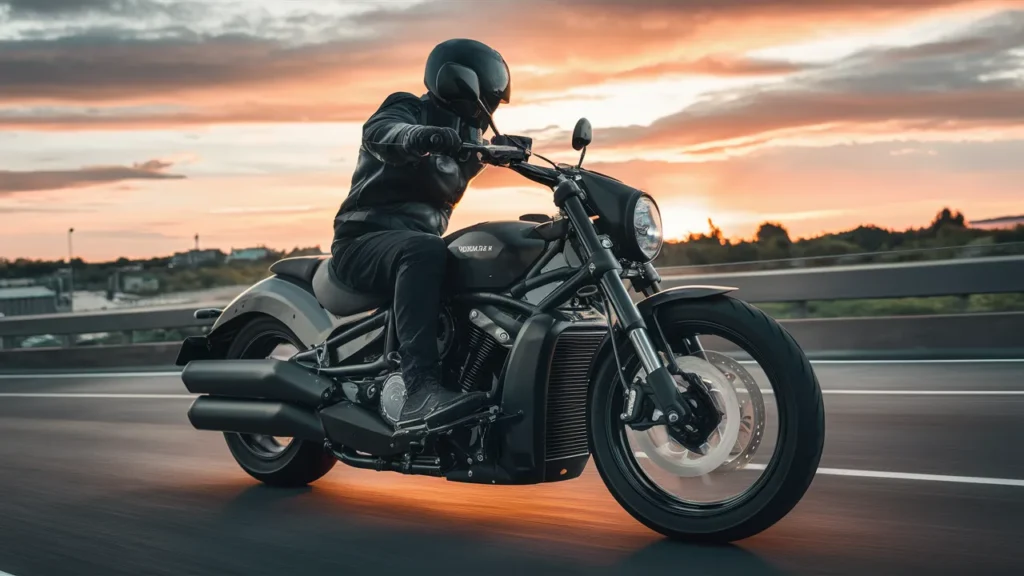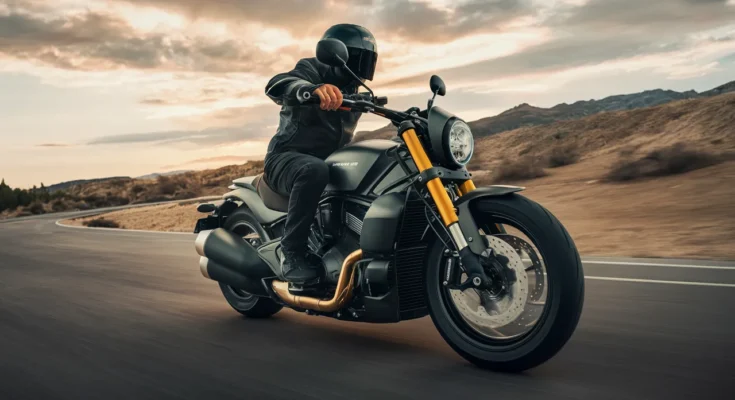Introduction: In the realm of motorcycling, heavy bikes have always stood as the epitome of power, style, and innovation. With advancements in technology and. A growing focus on sustainability, the future of heavy bike innovations promises exciting developments that will reshape the riding experience. From electric propulsion to advanced safety features, let’s delve into the FAQs surrounding the future of heavy bikes.

What are the key trends shaping the future of heavy bike innovations
- As we look ahead, several trends are poised to transform the landscape of heavy bike innovations:
- Electric Revolution: The shift towards electric. Propulsion systems is gaining momentum, driven by concerns over environmental impact and the desire for cleaner, quieter rides.
- Connectivity: Heavy bikes of the future will be increasingly connected, with integrated smart features that enhance safety, navigation, and entertainment.
- Autonomous Riding: While still in early stages, the concept of autonomous. Heavy bikes presents intriguing possibilities for hands-free commuting and enhanced safety.
- Lightweight Materials: Manufacturers are exploring the. Use of lightweight yet durable materials such as carbon fiber and titanium to improve performance and efficiency.
- Customization: Personalization options will. Continue to expand, allowing riders to tailor their heavy bikes to reflect their unique preferences and styles.
How is electric propulsion revolutionizing heavy bikes?
- Electric heavy bikes offer numerous advantages over traditional combustion engine counterparts, including:
- Zero Emissions: Electric propulsion eliminates harmful emissions, contributing to cleaner air and reduced environmental impact.
- Instant Torque: Electric motors deliver instant torque, providing exhilarating acceleration and responsive performance.
- Lower Maintenance: With fewer moving parts and .Simplified drivetrains, electric heavy bikes require less maintenance compared to. Internal combustion engine counterparts.
- Quiet Operation: Electric motors operate quietly. Offering a more serene riding experience without the noise and vibration associated with traditional engines.

What advancements can we expect in heavy bike safety features?
- Safety remains a paramount concern in heavy bike innovations, and future developments aim to enhance rider protection and situational awareness through:
- Advanced Collision Avoidance Systems: Utilizing sensors and artificial intelligence, heavy bikes of the future will be equipped with collision avoidance systems that can detect and react to potential hazards on the road.
- Integrated Helmet Technology: Smart helmets with built-in heads-up displays, rearview cameras, and communication capabilities will provide riders with real-time information and enhanced visibility.
- Adaptive Cruise Control: Similar to automotive technology, adaptive cruise control systems will allow heavy bikes to maintain a safe distance from other vehicles while cruising on the highway.
- How will connectivity redefine the heavy bike riding experience? Connectivity features will revolutionize how riders interact with their heavy bikes and the world around them, offering:
- GPS Navigation: Integrated navigation systems with live traffic updates will help riders navigate unfamiliar routes with ease.
- Smartphone Integration: Seamless integration with smartphones will enable riders to access calls, messages, music, and other essential apps without taking their hands off the handlebars.
- Emergency Assistance: In the event of an accident or breakdown, connected heavy bikes can automatically alert emergency services and provide precise location information to expedite rescue efforts.

Are autonomous heavy bikes a realistic possibility?
- While still in the experimental stages, the concept of autonomous heavy bikes holds promise for:
- Commuting Convenience: Autonomous heavy bikes could offer commuters a hands-free riding experience, allowing them to relax, work, or engage in other activities during their journey.
- Enhanced Safety: Autonomous technology has the potential to significantly reduce the risk of accidents by eliminating human error and enhancing situational awareness through sensors and artificial intelligence.
- Group Riding Coordination: Autonomous heavy bikes could communicate with each other to maintain formation and coordinate group rides more efficiently, enhancing safety and camaraderie among riders.
From electric propulsion to advanced connectivity and autonomy, tomorrow’s heavy bikes will redefine the riding experience for enthusiasts around the globe. As technology continues to evolve, riders can look forward to a thrilling new era of innovation on two wheels.




Thanks for the practical tips.
This article is a fantastic resource. Your detailed explanations and practical advice are greatly appreciated.
Keep up the fantastic work, I read few posts on this site and I conceive that your site is rattling interesting and has circles of great info .